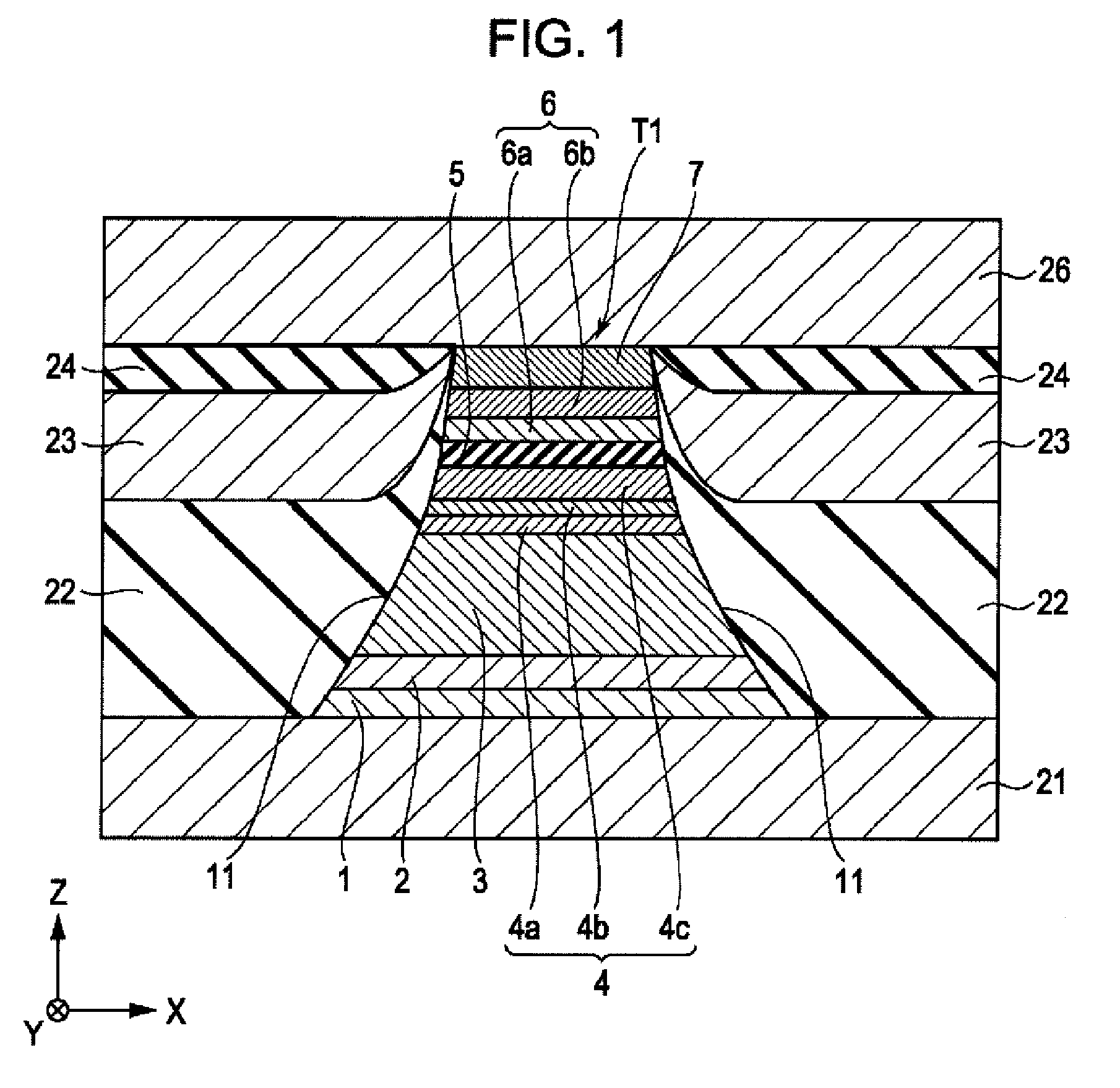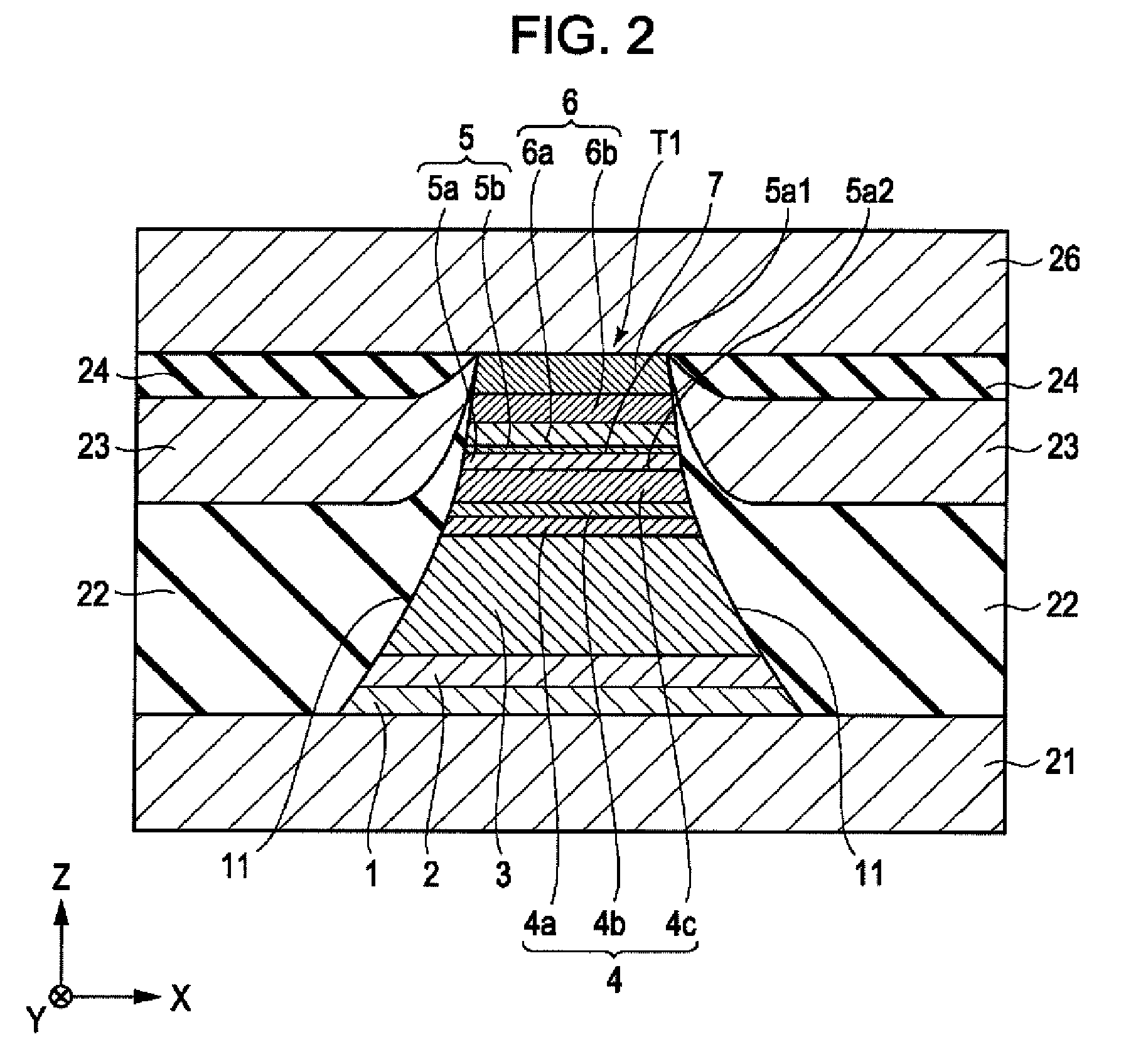Tunneling magnetic sensor including tio-based insulating barrier layer and method for producing the same
a magnetic sensor and insulating barrier technology, applied in the field of magnetic sensors, can solve the problems of undesirable magnesium concentration in the above range of the insulating barrier layer, and achieve the effect of increasing the resistance change rate (r/r)
- Summary
- Abstract
- Description
- Claims
- Application Information
AI Technical Summary
Benefits of technology
Problems solved by technology
Method used
Image
Examples
examples
[0110]Tunneling magnetic sensors having the structure shown in FIG. 1 were produced.
[0111]The multilayer part T1 was formed by forming the base layer 1, the seed layer 2, the antiferromagnetic layer 3, the pinned magnetic layer 4, the insulating harrier layer 5, the free magnetic layer 6, a ruthenium layer having an average thickness of about 20 Å, and the protective layer 7 in the above order. The base layer 1 was formed of tantalum and had an average thickness of about 30 Å. The seed layer 2 was formed of NiFeCr and had an average thickness of about 50 Å. The antiferromagnetic layer 3 was formed of IrMn and had an average thickness of about 70 Å. The first pinned magnetic layer 4a was formed of Co70at%Fe30at% and had an average thickness of about 14 Å. The nonmagnetic intermediate layer 4b was formed of ruthenium and had an average thickness of about 9.1 Å. The second pinned magnetic layer 4c was formed of Co90at%Fe10ats and had an average thickness of about 18 Å. The enhancement ...
PUM
| Property | Measurement | Unit |
|---|---|---|
| concentrations | aaaaa | aaaaa |
| concentrations | aaaaa | aaaaa |
| magnetization | aaaaa | aaaaa |
Abstract
Description
Claims
Application Information
 Login to View More
Login to View More - R&D
- Intellectual Property
- Life Sciences
- Materials
- Tech Scout
- Unparalleled Data Quality
- Higher Quality Content
- 60% Fewer Hallucinations
Browse by: Latest US Patents, China's latest patents, Technical Efficacy Thesaurus, Application Domain, Technology Topic, Popular Technical Reports.
© 2025 PatSnap. All rights reserved.Legal|Privacy policy|Modern Slavery Act Transparency Statement|Sitemap|About US| Contact US: help@patsnap.com



